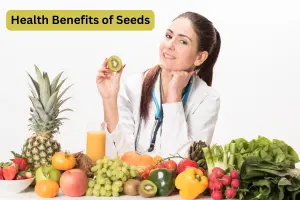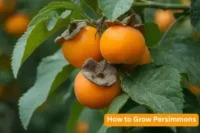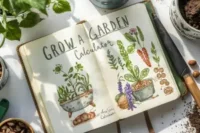What is Seed Germination? A Complete Guide for Beginners
Published: 27 Apr 2025
Welcome, Green Thumbs!
Have you ever thought, What is seed germination? How does a tiny, seemingly lifeless seed transform into a vibrant, thriving plant? The answer lies in seed germination, the crucial process that allows plants to grow from seeds. This fascinating plant germination process, triggered by water, oxygen, and the right temperature, ensures the seed begins its journey toward becoming a seedling.
Sheila, a seasoned botanist with seven years of experience, provides expert insights throughout this article. We will cover the definition of seed germination, seed germination types, stages of seed sprouting, factors, seed dormancy, factors and causes of seed dormancy, optimal conditions for seed germination, and a conclusion.
By the end of this article, you will have a clear understanding of seed germination and practical tips for nurturing healthy plants. Let’s discover how mastering this plant germination process is as vital for gardening as learning the basics of cooking is for chefs!
The creation of a thousand forests is in one acorn.Ralph Waldo Emerson
Understanding:What is Seed Germination?
Seed germination is an amazing moment when a tiny, seemingly lifeless seed awakens and starts its journey into a thriving plant. This process is crucial for plant growth, agriculture, and ecosystems, ensuring the continuation of plant species.
I’ve observed this process countless times in my garden, where providing just the right amount of water, oxygen, and warmth sparks new growth.
It’s incredible to see how quickly seeds respond to these conditions, reminding me of nature’s resilience and precision.
Definition of Seed Germination
Seed germination activates a seed’s internal systems, leading to the emergence of a root (radicle) and a shoot (plumule). This transformation occurs when the seed absorbs water, kick-starting biochemical processes necessary for growth.
Importance of Seed Germination in Nature
Seed germination is essential for plant survival, growth, and reproduction. Without it, ecosystems would collapse, and life on Earth would be severely impacted. Here’s why germination is so vital
Supports Ecosystems and Biodiversity
- It ensures the survival and reproduction of plant species.
- It provides oxygen, food, and shelter for wildlife.
- It enhances genetic diversity, making plant species more resilient.
Maintains Environmental Stability
- It prevents soil erosion by stabilizing the land with plant roots.
- It helps forests and habitats regenerate after natural disasters.
- It contributes to carbon uptake, reducing greenhouse gases.
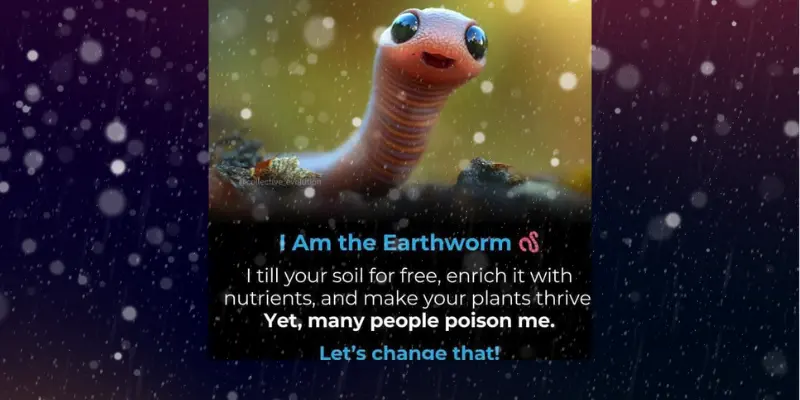
Sustains the Food Chain and Agriculture
- It provides food for herbivores, which supports the entire ecosystem.
- It’s essential for crop production and ensuring human food security.
- It plays a key role in maintaining balanced and healthy ecosystems.
The Stages of Seed Germination: From Dormancy to Sprouting
Understanding the stages of seed germination can provide insight into how a seed transforms. Seed germination occurs through several stages, and I will walk you through this seed-sprouting process.
Stage 1: Imbibition (Water Absorption)
In this initial stage, the seed absorbs water. Water triggers the enzymatic processes inside the seed, starting the embryo’s growth. During this phase, it’s crucial to maintain the right level of moisture to avoid waterlogging.
Pro Tip: Keep the soil wet but not soaked during imbibition for optimal water absorption.
Stage 2: Activation of Metabolism
Once the seed has absorbed enough water, its metabolism is activated. The stored food within the seed begins to convert into energy, and the embryo grows. Roots and shoots begin to form, marking the start of the plant’s life.
Practical Tip: Ensure the seed is planted at the correct depth to allow its roots to grow downwards without obstruction.
Stage 3: Emergence of Radicle and Plumule
The radicle, or root, is the first part to emerge from the seed. It anchors the plant to the soil and absorbs nutrients and water from the environment.
Stage 4: Shoot Emergence
Following the radicle, the shoot emerges from the soil, seeking light. This marks the first visible sign of growth.
Pro Tip: Once the shoot emerges, ensure your plants get adequate light, which helps with photosynthesis and healthy growth.
A single seed can turn into a forest, just as a small act of kindness can transform a life.Debasish Mridha
Types of Seed Germination
The seed sprouting process occurs in two main types, each with unique growth strategies that help seeds survive in different environments.
- Epigeal Germination
- Hypogeal Germination
Epigeal Germination
- In epigeal germination, the seed leaves (cotyledons) rise above the soil, capturing sunlight for photosynthesis.
- Plants like beans and sunflowers follow this pattern, where the cotyledons turn green as they absorb light.
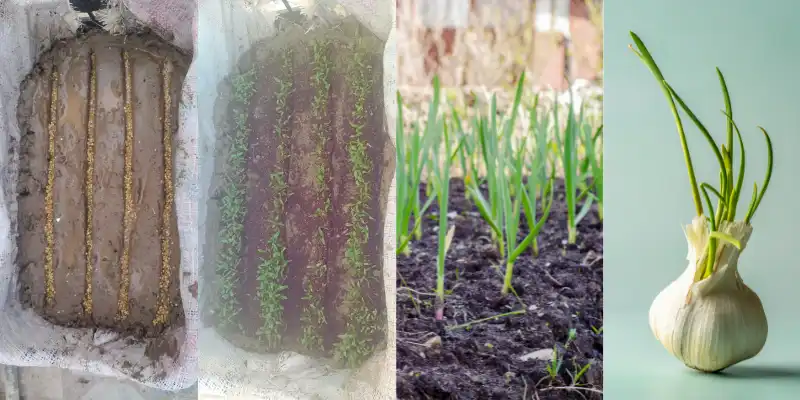
Hypogeal Germination
- In hypogeal germination, the cotyledons stay underground, protecting stored nutrients while the shoot grows above.
- Crops like peas and corn use this method, focusing energy on a solid shoot that later develops leaves for photosynthesis.
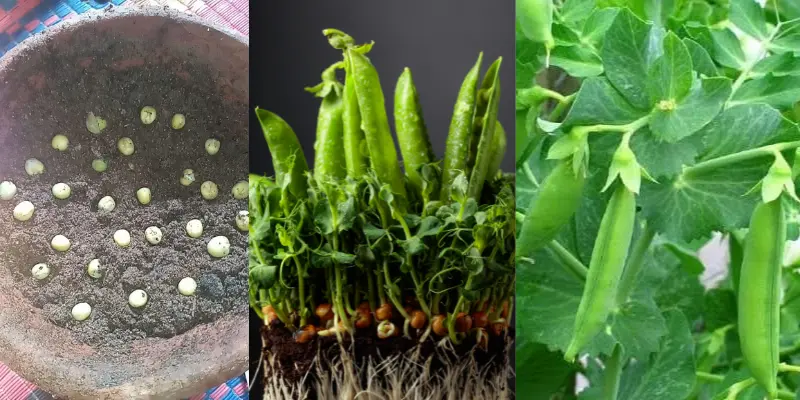
Factors Affecting Germination of Seeds
The germination process depends on critical factors that drive a seed’s journey from dormancy to growth. When these factors come together, they create the ideal environment for a seed to thrive, like setting the right conditions for a spark to ignite.
Here are the main factors:
- Water
- Oxygen
- Temperature
- Light
| Factors | Description | Examples |
|---|---|---|
| Water | Water starts growth. I’ve seen seeds quickly sprout when they get enough water. | Beans, tomatoes, and cucumbers need consistent moisture. |
| Oxygen | Oxygen powers growth. Seeds planted too deep struggle—learned this after burying carrot seeds too far! | Lettuce and carrots germinate best in aerated soil. |
| Temperature | Warmth triggers germination. My peppers only sprouted well after I kept them warm enough. | Wheat and barley need cool temperatures, while peppers and melons need warmer conditions. |
| Light | Some seeds need light or dark. I discovered lettuce loves light; onions don’t! | Lettuce seeds require light, while onion seeds need darkness. |
Key factors ensure seeds grow successfully and strongly.
Seed Dormancy: Why Some Seeds Delay Germination
Seed dormancy is nature’s way of ensuring seeds survive until conditions are right. This delay helps seeds withstand harsh environments, giving them a better chance to grow successfully.
In nature, nothing is perfect, and everything is perfect. Trees can be contorted, bent in weird ways, and they’re still beautiful.Alice Walker.
Definition of Seed Dormancy
Seed dormancy is when seeds remain inactive, even in favourable conditions, to avoid sprouting at the wrong time. I’ve often seen dormant seeds “wait” until spring after cold winters, ensuring they grow at the best time.
Causes of Seed Dormancy
- Hard Seed Coats: Some seeds have tough outer layers that block water and oxygen. I once tried to germinate lotus seeds with their hard coats, but they stayed dormant until I softened the shells.
- Internal Inhibitors: Some seeds, such as drought-resistant plants, contain natural chemicals that delay growth until conditions improve.
Breaking Seed Dormancy
- Scarification: Gently scraping or soaking seeds can break their hard coats, allowing them to germinate. I’ve successfully sprouted hard-headed seeds by lightly sanding their surface.
- Environmental Triggers: Temperature changes or light exposure can signal seeds to start growing. For instance, I’ve observed that certain wildflowers need cold winters to break dormancy and sprout in spring.
| Common Seed Germination Problems |
|---|
1: Poor Germination Rate: Using old or damaged seeds can cause low germination rates. Always check the viability of your seeds before planting. Pro Tip: Before planting large quantities, test a small batch of seeds for viability by placing them on a damp paper towel. 2: Seeds Dying After Germination: This can happen due to excessive heat, poor soil drainage, or insufficient nutrients. Keep an eye on your seedlings during the early stages. Practical Tip: Transplant your seedlings to larger pots if they outgrow their initial space. |
How to Optimize Conditions for Seed Germination
Creating ideal conditions for seed germination is like setting up a strong foundation for a house—everything must be balanced to support growth. Each factor plays a unique role, and together, they ensure the seeds have the best start possible.
- Ensuring Proper Watering
- Temperature Control
- Light Supply
- Oxygen Supply
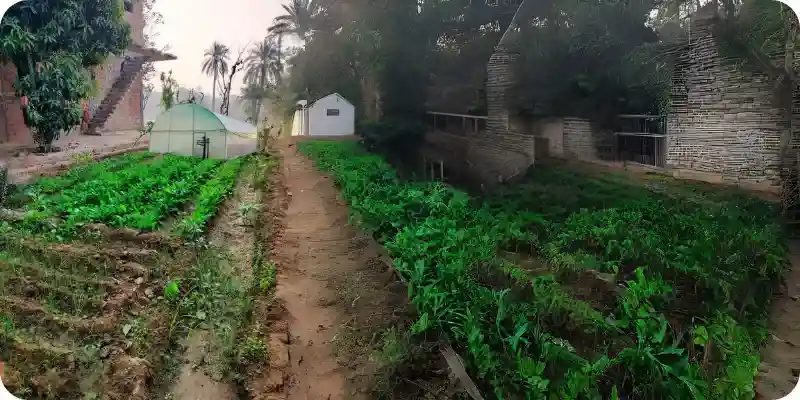
Here’s a table summarizing the conditions for seed germination with easy-to-understand descriptions and everyday examples.
| Conditions | Description | Examples |
| Proper Watering | Keep soil moist, but avoid soaking to prevent seed rot. | Beans, tomatoes, cucumbers |
| Temperature Control | Provide the right warmth for each seed to grow well. | Warm: peppers; Cool: lettuce |
| Light Supply | Some seeds need light; others prefer darkness to sprout. | Light: lettuce; Dark: onion |
| Oxygen Supply | Use loose soil to let oxygen reach the seed easily. | Carrots, spinach, wildflowers |
| Interesting Facts |
|---|
|
Final Verdict: Growing with Confidence
In this guide, we’ve answered the question, What is seed germination? and explored its stages, types, and essential factors. Whether you’re a beginner or a seasoned gardener, understanding the fundamentals of seed germination is the first step to growing healthy plants.
I recommend experimenting with different conditions to see firsthand how seeds respond; it’s a fantastic way to learn what works best for you.
Ready to grow? Grab some seeds, prepare the soil, and see the magic of germination. Don’t forget to share your results with us!
FAQs
Read the frequently asked questions to learn more about seed germination:
Seed germination is the process by which a dormant seed begins to grow into a living plant. It starts with water absorption, which activates the seed’s metabolism and leads to the emergence of the radicle (root) and plumule (shoot). This process marks the beginning of a plant’s life and is vital for plant growth and reproduction.
Seed germination is essential for the survival of plant species, agriculture, and ecosystems. It ensures plant regeneration, supports food production for humans and animals, and helps maintain biodiversity. Without germination, seeds would fail to grow, disrupting ecosystems and food supply chains.
The two main types are epigeal germination and hypogeal germination. In epigeal germination, the seed leaves (cotyledons) rise above the soil to perform photosynthesis, as seen in beans and sunflowers. In hypogeal germination, cotyledons remain underground, storing nutrients to support the plant’s initial growth, as seen in peas and corn.
The key factors are:
- Water: Essential for activating enzymes and softening the seed coat.
- Oxygen: Necessary for cellular respiration to provide energy.
- Temperature: Influences enzyme activity; different seeds have varying optimal temperatures.
- Light: Some seeds need light to germinate (e.g., lettuce), while others require darkness (e.g., onions).
- Seeds have the best chance to sprout successfully when these factors are balanced.
Seed dormancy is a survival mechanism where seeds delay germination even under favorable conditions. This ensures that seeds sprout only when the environment is ideal for growth, such as after a cold winter or a dry season. Dormancy helps plants avoid harsh conditions and increases their chances of survival.

- Be Respectful
- Stay Relevant
- Stay Positive
- True Feedback
- Encourage Discussion
- Avoid Spamming
- No Fake News
- Don't Copy-Paste
- No Personal Attacks

- Be Respectful
- Stay Relevant
- Stay Positive
- True Feedback
- Encourage Discussion
- Avoid Spamming
- No Fake News
- Don't Copy-Paste
- No Personal Attacks

